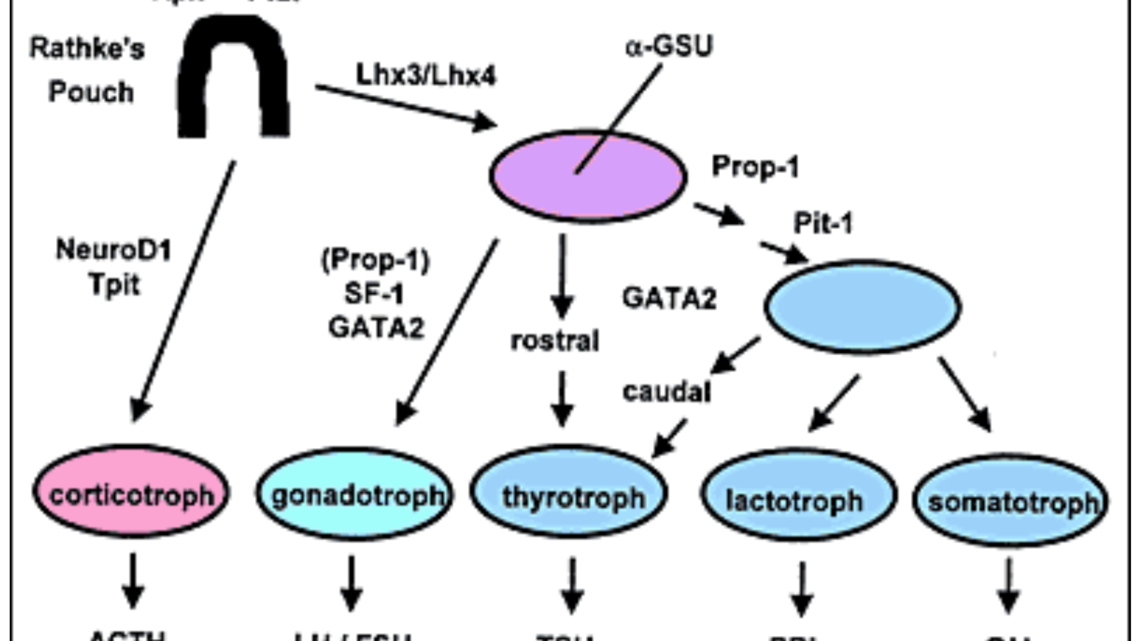Pit-1
January 13, 2014
Human height is the result of how genetic height potential is turned into reality by circumstance. From the first whispers of life in the womb, the DNA in the nuclei of the embryo’s cells ‘monitors’ what situation to expect at birth, and develops the body accordingly. While genes provide us with the recipes for development, it is the availability and preparation of the ingredients that determines how genes are expressed in the final phenotype. This field of expertise of how and when genes are switched on or off is called epigenetics. Genes are switched on or off in response to certain initiating signals. In a process called transcription this signal activates the process of encoding specific parts of DNA to be used for the production of a protein. As much as 10% (or 2500) of all the proteins we can produce is somehow involved in transcription. One of these proteins is Pit1.
Pit 1 is a pituitary-specific transcription factor that activates promoters of growth hormone encoding genes. In other words it stimulates the making of growth hormone (GH), and even more so if environmental factors prompt it to do so. A specific mutated model of mice called the Snell Mouse, known for its lack of Pit1, is up to 70% smaller than regular mice. At the same time the lifespan of these very small mice increases with up to 50%. This possibly results from a tradeoff between the physical vigor and life span that is mediated by pituitary hormones. Growth hormone and some other hormones encoded by Pit1 like thyroid hormone and prolactin, seem to also regulate mechanisms that schedule mortality in mammals. And people are big mammals, full of GH.